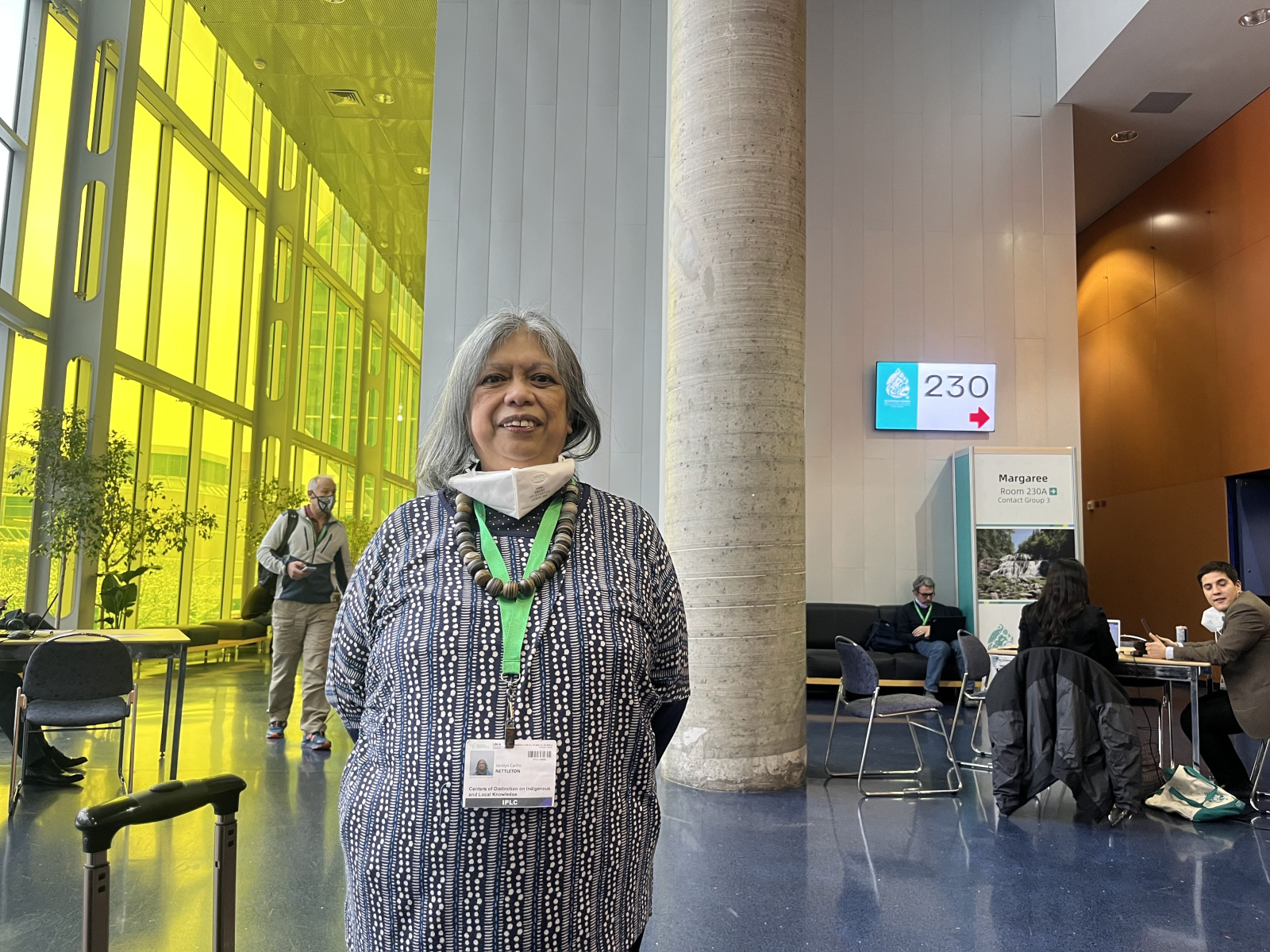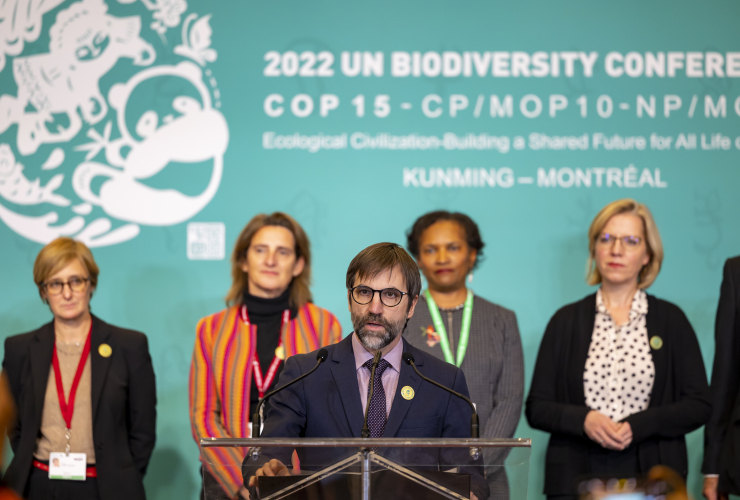As a push to recognize Indigenous sovereignty faces roadblocks at the United Nations biodiversity conference in Montreal, Environment Minister Steven Guilbeault says Canada is not standing in the way of those efforts.
The federal government supports and embraces Indigenous rights, he said, pointing to recent funding announcements supporting Indigenous-led conservation projects. Since the COP15 conference began, Canada has announced $800 million in funding for Indigenous Protected and Conserved Areas (IPCAs), where Indigenous nations take the lead on protecting and conserving ecosystems, and $5.8 million to build an Indigenous Guardian Network.
But naming Indigenous traditional territories as a category of their own in the COP15 global biodiversity plan remains an issue. A major focus of the conference’s final agreement is a pledge to protect 30 per cent of the world's lands and waters by 2030. According to a draft of the agreement, countries aim to achieve this by creating protected areas and using "other effective area-based conservation measures." Indigenous groups are calling for Indigenous traditional territories — and their sovereignty over those lands and waters — to be recognized as part of the plan. However, some western countries are reportedly blocking those efforts.
Without a distinct category, Indigenous-led conservation efforts like IPCAs would be considered protected areas, similar to a national park, under the UN framework. In Canada, First Nations’ traditional territories are still disputed lands, largely owned by the Crown, however there are some agreements with governments, including treaties and IPCAs, that seek to solve disputes over what is Crown land and what is First Nations ancestral territories. It’s unclear how recognizing Indigenous territories in the COP15 biodiversity plan would affect nation-to-nation relations in Canada.

But agreements between Indigenous nations and nation states don’t always exist in other countries, and so the tension over clearly recognizing Indigenous territories in the biodiversity plan is a technicality with serious stakes.
Joyce Cariño Nettleton, a representative from the Centers of Distinction on Indigenous and Local Knowledge, says Canada’s current Indigenous-led conservation efforts don’t apply to so many other countries without the same nation-to-nation relationships. Indigenous communities in South America, South Asia and some parts of Africa are worried their territories will be taken by nation states under the guise of conservation if the biodiversity plan does not include Indigenous territories. Indigenous Peoples in Canada faced similar situations in the past when the conservation movement and the creation of national parks dispossessed them from their lands and barred them from entering their territories.
Recognizing Indigenous territories as state-created conservation areas without recognizing sovereignty means some Indigenous Peoples remain at risk. Conflicts will continue between state-controlled conservation and Indigenous nations if language around Indigenous territories is excluded or appended, Nettleton said.
However, if Indigenous territories are clearly recognized in the final text, there may be other pathways for Indigenous nations to conserve their lands without state-regulated conservation, Nettleton said.
Recognizing Indigenous territories as a unique category in the biodiversity plan is unilaterally supported by the International Indigenous Forum, an organization representing Indigenous nations across several continents.
Indigenous nations from the forum argue recognizing Indigenous territories will develop greater ecosystem connectivity than creating a patchwork of conservation areas.
“We need the territories. Why does the government give finances to the companies rather than us, who have all the history protecting territories?” Lena Estrada Añokazi from Coordinator of Indigenous Organizations of the Amazon River Basin (COICA) said.
“They come to our territories to teach us how to do conservation — come on, it’s crazy,” she added.
There are questions about land conflicts and how money would be allocated if Indigenous territories are included as a clear and distinct category in the biodiversity plan, but it’s unclear how that conversation is playing out with western countries in negotiations.
Protected areas are financed from national budgets, while Indigenous territories are not financed by states or climate funds in many parts of the world, Gregório Mirabal, COICA's general co-ordinator, and Stand.earth’s Amazon program director Alicia Guzmán León write in an upcoming op-ed in Canada’s National Observer.
“But it's still unclear what agreement (on Indigenous traditional territories) looks like from Canada, Norway, the European Union, and New Zealand,” they add.
Canada’s National Observer / Matteo Cimellaro / Local Journalism Initiative







Comments